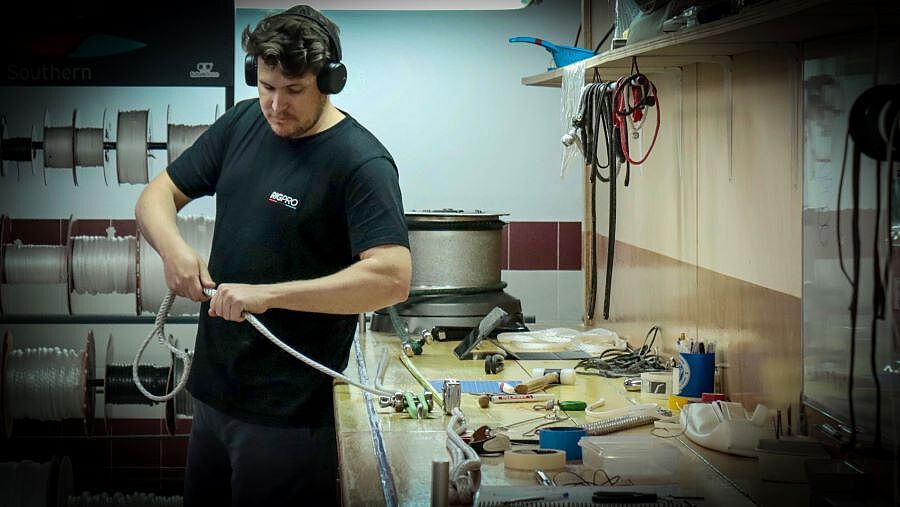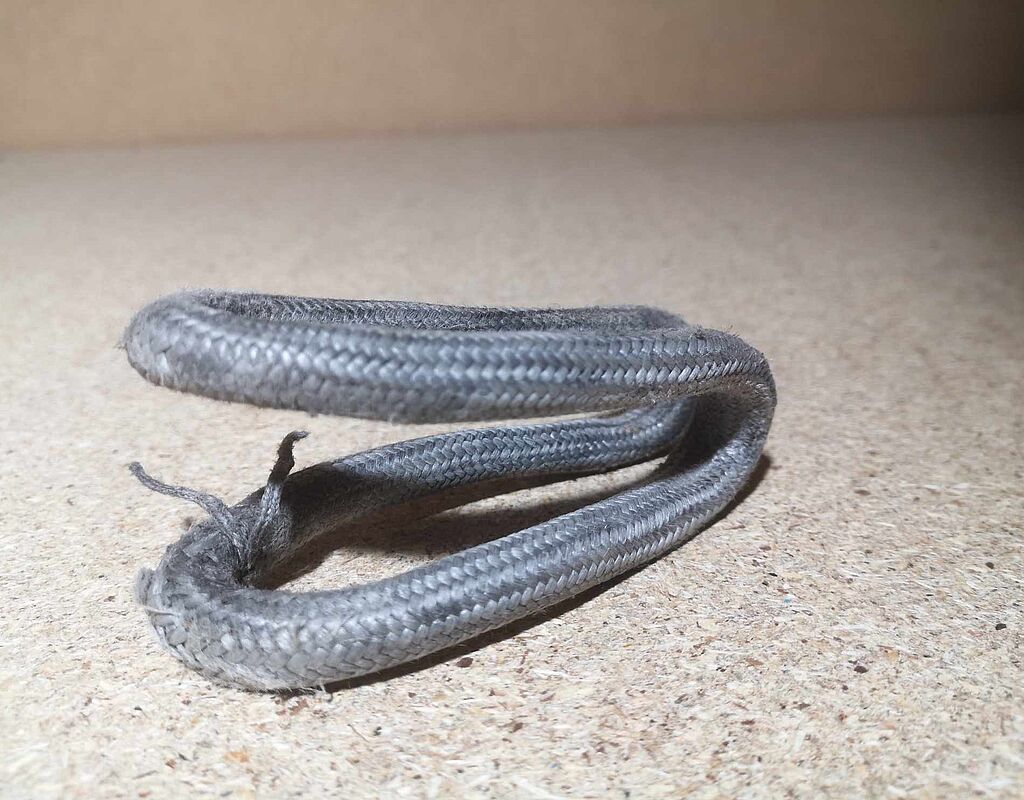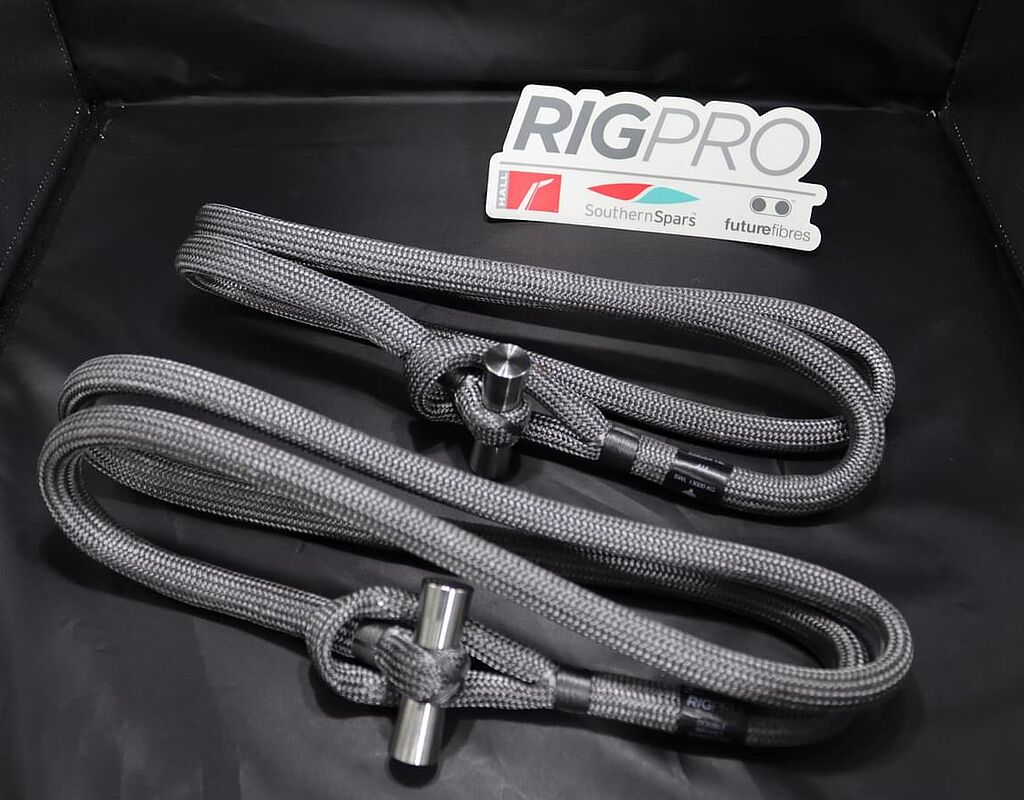How to Look After Critical Running Rigging
Lashings like soft shackles, loops, and dog bone strops are increasingly used on yachts. While they come in handy, they also need looking after. Pantaenius asked a leading expert from world-renowned rigging company, RigPro, for practical advice.

Professional Racing Teams, IMOCAS, Maxis, and those who employ a full-time crew member to tend to the running rigging/rigging, change the connections on board regularly, and for good reason. Cordage can lose a percentage of its breaking strength annually, and even with a margin factored in for safety, this can have significant ramifications, especially if devices like loops or dog bone strops are utilised as structural rigging – effectively holding up the mast – i.e., if they attach the forestay or backstay, for example.
This means anyone using soft connections on yachts should follow the above examples and make sure the crew is correctly briefed and informed in three main areas: 1. Noticing when something needs replacing; 2. Making sure that the right item is used in the right place, and 3. Setting up a preventive maintenance plan.
1. Noticing When Something Needs Replacing

visible damage
The good news is that the wear and tear of soft connections is usually easier to recognise than with traditional metal connections. Metal can have an undetectable hairline crack inside a weld invisible to the human eye and break the next day. Whereas, in a soft connection made of textile rigging, a potential failure can often be noticeable.
With a little bit of caution, it’s relatively easy to see when an item should not be used any longer. Major telltale signs are, a. holes in the cover, b. melted sections, and c. signs of chafe. In short: Any damaged, or worn cordage item needs immediate replacing, just as no one would use rusty bits of metal in critical connections.

Russell Whitworth
Experienced rigger Russell Whitworth, Senior Project Manager at the global rigging company RigPro, warns of a common mistake: “Quite often if a high load point occurs on an item, people think it’s best to move it around. But it’s still there. All they do is move it to another place. It’s like with bent metal: If you straighten it, it has the old form, but you haven’t returned it to its original strength, in fact quite the opposite, when a soft connection is loaded in a certain way, it is best practice, where possible, to continue using it in that configuration.
One simple underlying factor within the running rigging world is that end users must understand that rope is a consumable, and it gets consumed at different rates.”
The bad news is that basic soft shackles have a low shelf life, whereas true strops and loops have a far longer shelf life. The real safe life cycles of soft connections are boat-specific. Every item has its own purpose, combining different types of weather, water, UV radiation, blocks, winches, etc. It is advised to follow the manufacturer´s recommended service/ inspection cycle. Visual inspection of cordage should be an ongoing process when sailing; however, it must be inspected at least monthly and prior to heavy weather sailing and offshore voyage, says Whitworth. This frequency should intensify with age. Whitworth worked on yachts for years prior to his position at RigPro. His golden rule for the crew is this: “All soft connections, especially those that you rely on could be inspected a lot more than you’re probably doing.“
RigPro is digitally developing their tracking process to aid with inspections. In any new cordage product, there is now a digital tag linked to a database. Clients are able to view details to assist with the safe practice of their product; for example, photos showing the intended configuration. As well as this, the photos offer a useful comparison tool for inspection as it can help identify any differences as it is used. It also displays information regarding its safe working load and the next inspection due date, which means inspection by a certified RigPro affiliate.
2. The Right Item in the Right Place
Yachts often have various loops, soft shackles, and dog bone strops used on them. This means a growing risk of the soft connections that are already on the boat used in other, potentially inadequate places. Items should not be judged by their visual size or physical appearance. They have a specific use case and a safe working load. The question is how to know about them.
Most yachts have enough rope and a splicing kit on board, however, producing soft connections does not only require splicing skill. In order to produce safe and reliable soft connections, you should have knowledge about the loads occurring in the rig and the properties of the material in use.

new double basket dog bone strop
“Most people think rope is rope, so often the driving force behind onboard decisions is diameter”, says Russell Whitworth. “But the diameter rope that pulls or holds your sails comes with range of options both in strength and longevity. Some of those options won’t be fit for purpose. We worked with a yacht this year after they had replaced some very tired running rigging based on diameter and length alone and the new very expensive mainsheet lasted just 10 days. This mistake was made with the best intentions, but without using the right sources of information.”
RigPro now provides their own soft connections. New items come with a QR code on the packaging as well as on a label on the part itself. The QR code takes the user to a dedicated RigPro page for that part which contains the necessary data: safe working load, maintenance, and planned maintenance. It even includes an image of how the item should be installed.
But RigPro can only do so much, says Russell Whitworth: “What we can’t control is if this beautiful piece of material that we built with our hands and our skill has been used on a rusty cleat on a dock and then put back to hold up a sail, where it breaks.”
3. Setting Up a Preventive Maintenance Plan
Most information about loads on the sails and the safe working loads of hardware can be found on the boat. Yards, riggers, and sailmakers provide clients with comprehensive documentation when handing over. The same goes for information about inspection cycles. Running rigging is often overlooked in inspection cycles and should be prioritised at the same level as the cables it holds up. The data needed for a maintenance plan is already there.
The truth is that the documentation is rarely read and is underutilised. With the digital database that RigPro is now setting up for each rig they deliver, they make the necessary information easily accessible to the crew. The registered client on the system can access replacement schedule information digitally.

new ferrule loop
The QR label on the running rigging does not allow full access to the client´s data, but it does provide inspection information specific to that supplied part. This allows private data to be protected whilst allowing the people onboard to know how to safely use the soft connection, be it full time crew, contractors or race crew.
The database displays the recommended inspection cycle, encouraging the clients to reach out to RigPro when they require inspection or replacement. This also gives RigPro material to learn from and to improve. The estimated life cycle of any part can be refined after replacement, the real breaking load of the worn part can be tested against the calculated one. That means, in turn, that the recommendations become more reliable over time – provided that the clients send the material in quickly after replacement.
Seek Advice and Take Your Running Rigging Seriously
But even if knowledge deepens and digitalization helps keeping up the record – nothing beats the regular visual inspection. When in doubt about an item, seek advice from a professional, preferably the rigging company that set up the rig in the first place. “Call us and we will recommend someone around the world”, says Russell Whitworth.
“It would be good for the future of yachting if your running rigging supplier is treated like your sailmaker. The bigger boats generally have a single running rigging supplier, at least for a period of time, which gains invaluable knowledge of your supplied parts, how they were specified and how they are behaving in your unique real work environment. Those boats generally build relationships with their running rigging supplier and have a safer set of operating running rigging.”